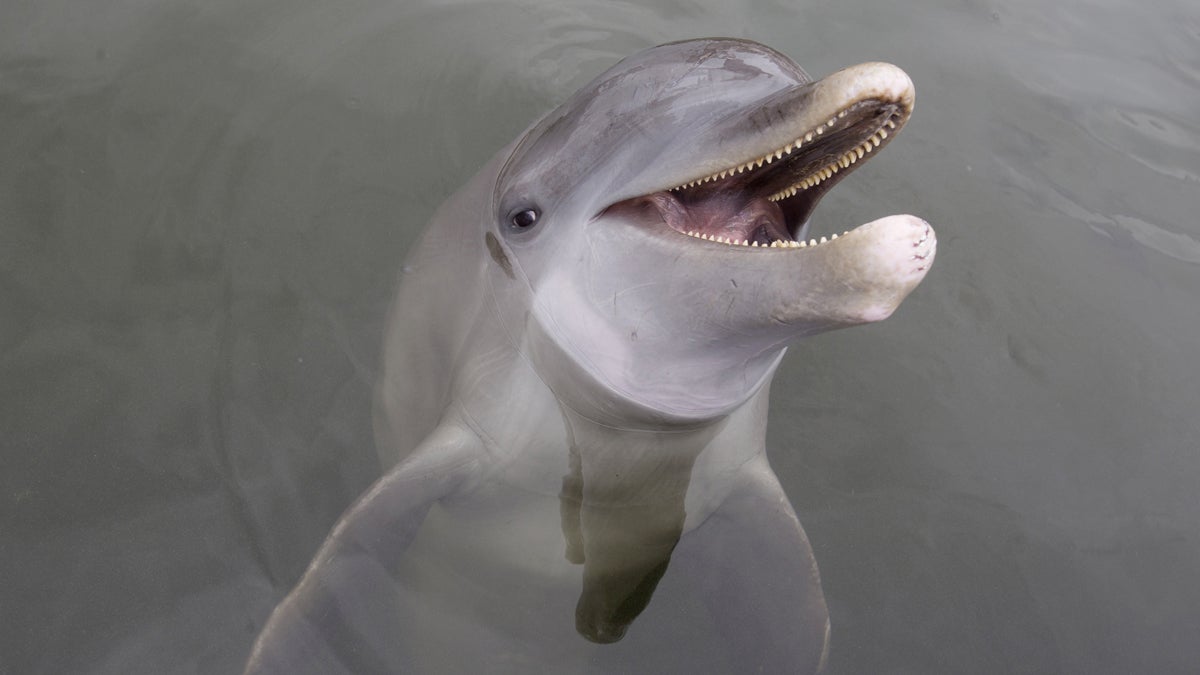Feds launch study as dolphins continue beaching along mid-Atlantic coast

This 2013 photo shows an Atlantic bottlenose dolphin, a species that has been dying and washing up along the Atlantic shore in record numbers this summer. (Wilfredo Lee/AP Photo, file)
The National Oceanic and Atmospheric Administration is now launching an investigation into what caused the death of 124 dolphins found stranded in coastal areas in the mid-Atlantic region since July.
Dolphins have been washing up on New Jersey beaches this summer at an unusually high number, said Robert Schoelkopf, director of the Marine Mammal Stranding Center in Brigantine, N.J.
A living but ill dolphin that beached in Wildwood died in transit to the center Thursday night.
“[It] was a lactating female, so that means there’s a young bottlenose dolphin out there that is slowly starving to death or has become shark bait because the other dolphins don’t really take them in or feed them or anything,” he said.
“Things like that make it harder for my staff to work.”
Dolphins live off the Jersey coast through the end of September, when they swim south. Researchers in Washington, D.C., will analyze data from up and down the Atlantic coast.
Schoelkopf’s team won’t get additional funding from the federal study.
But a NOAA representative said the strandings were seven times the historic average for July, and they are the most serious since an outbreak of disease called morbillivirus in the late 1980s.
WHYY is your source for fact-based, in-depth journalism and information. As a nonprofit organization, we rely on financial support from readers like you. Please give today.

